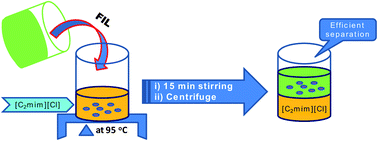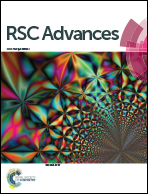Separation of rare earths and nickel by solvent extraction with two mutually immiscible ionic liquids
Abstract
It is shown that rare earths can be distributed between two immiscible ionic liquids, allowing the transfer of the rare earths from one ionic liquid phase to another. The ionic liquid 1-ethyl-3-methylimidazolium chloride was used as the initial feed phase and the ionic liquid trihexyl(tetradecyl)phosphonium bis(2,4,4-trimethylpentyl)phosphinate (Cyphos IL 104) as the extracting phase. The rare earths could be recovered from the extracting phase by stripping with a 2 M HNO3 solution. The ionic liquids could be regenerated for reuse in the next extraction step. This ionic liquid–ionic liquid extraction system can be used for the separation of rare earths from nickel, because nickel is not extracted under these experimental conditions. Such a separation process is relevant for the recycling of valuable metals from nickel metal hydride (NiMH) batteries. Direct dissolution of rare-earth oxides in 1-ethyl-3-methylimidazolium chloride was possible, provided that a small amount of concentrated hydrochloric acid was added to the ionic liquid.


 Please wait while we load your content...
Please wait while we load your content...